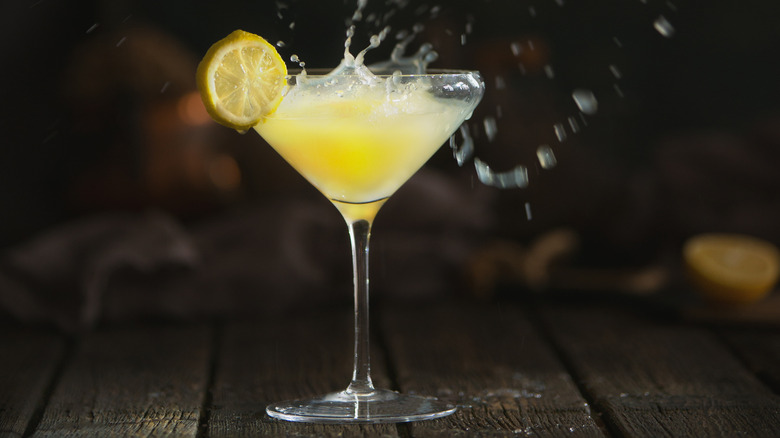Why Lemon Drops Aren't Technically Martinis
Whether your preference is for a cobbler, a sour, or a daiquiri, you're probably familiar with certain categories of cocktails. And while these designations come in handy if you're writing up a menu and want to simplify the vast canon of drinks, the consolidation does a disservice to less popular styles that can wind up lost to history in the process — like the category known as the crusta.
Yet although the word may not be familiar to you, there's a good chance you may have had one classic example — or at least heard of it — and that's the lemon drop. This bright and punchy sweet-tart drink has long been misplaced in the martini category, but the truth is that it's actually an archetype of the crusta style.
Like other classic cocktails, the crusta has a defining formula. It's made from a base spirit, lemon juice, and sugar. The original recipe for this tipple (developed in mid-19th century New Orleans) is believed to have been brandy-based, but while the classic lemon drop follows this initial blueprint, it uses vodka instead. A martini, on the other hand, is made from a base spirit — typically gin or vodka — that's combined with a type of vermouth (sometimes as a riff with a 50/50 ratio) and usually nothing more. And while there are many variations of the iconic Bond-favored staple, a true lemon drop belongs in the crusta section.
Making a modern crusta
A crusta can be made so many ways thanks to its simple formula. You can make a simple syrup for your cocktails (and even try some tasty upgrades) and include it as your sugar element, but today, a common lemon drop recipe features equal parts vodka, lemon juice, and triple sec as the sweet star. Another suggests using limoncello instead, doubling down on lemon flavor (whereas triple sec is an orange liqueur) — and even incorporates lemon bitters for a little balance.
Another important signifier of the classic crusta is a sugared rim, or crust (hence the name), and either a sizable piece of citrus zest or a more elaborate carving of the fruit. A crusta includes an entire section of the peel in one round piece that's then inserted into the glass. Today's lemon drops are often adorned with a simpler garnish — a slice of lemon dredged in sugar. You can also ditch the v-shaped martini vessel, as historically the crusta was served in a wine or old fashioned glass.
But if the lemon drop isn't your thing, you can experiment with a personalized crusta. Use whiskey or rum as your base, try maraschino liqueur for a hint of cherry, or grenadine for sweetness (the latter of which adds a pretty pink color, too.) Exchange lemon juice for grapefruit. No matter how you choose to customize or present your cocktail, you'll have a hand in helping to preserve the crusta custom, and carry on its unique name.

